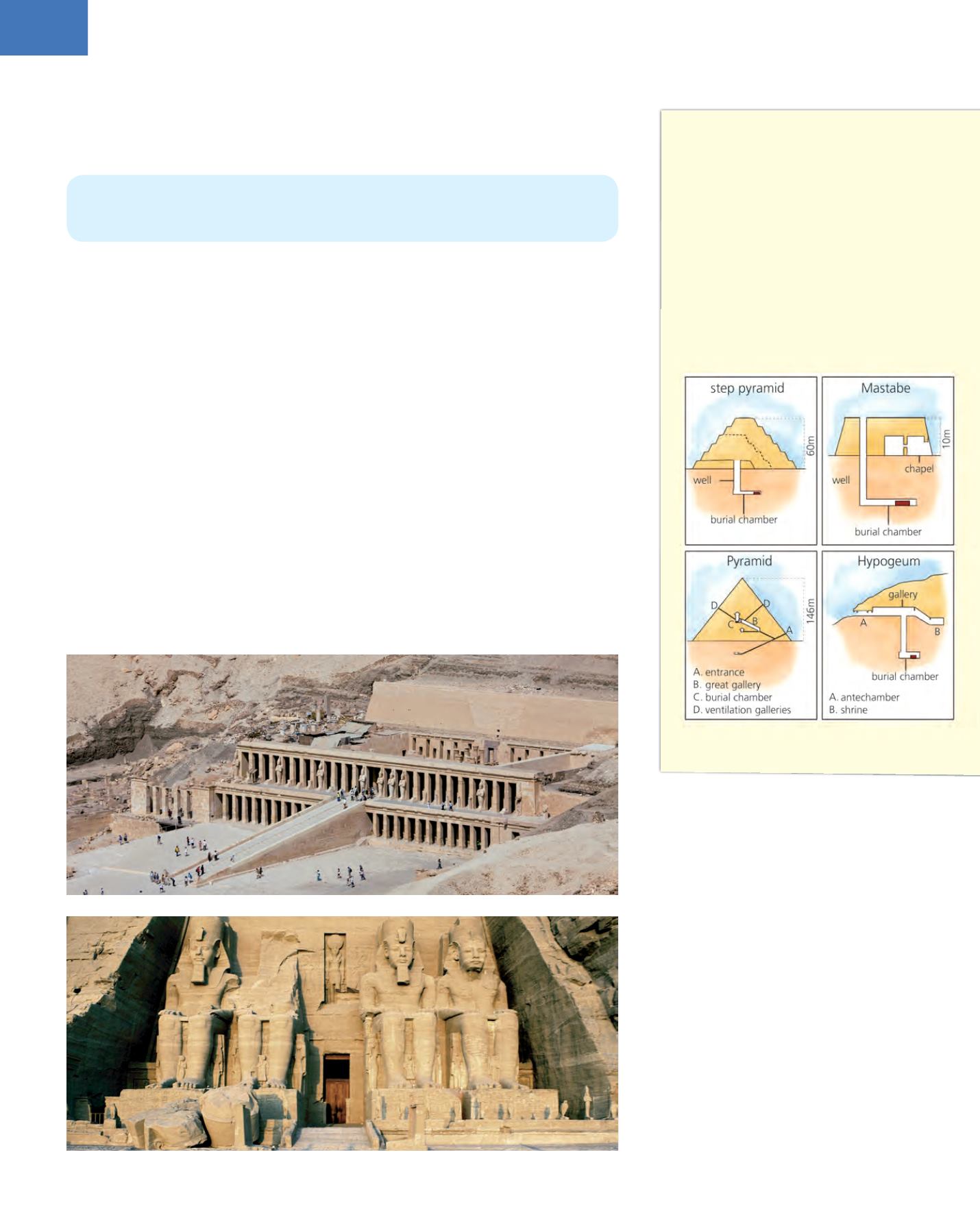
3
60
History
3.5. Art in ancient Egypt
Architecture
Most monuments were built for religious purposes. The most important were the
following:
❚
Temples
were buildings dedicated to the gods. Only the priests could enter. The
most famous ones are in Karnak and Luxor. A special type of temple, a
rock
temple
, was carved out of the rock. The most famous examples can be found in
Abu Simbel, such as the one dedicated to Ramesses II.
❚
Tombs
were buildings that contained burial chambers or rooms where the
sarcophagus (decorated coffin
20
) was placed with the mummy (the pharaoh or
important officials) inside. Some also had false empty chambers to confuse tomb
robbers. There were three types of tomb:
–
Mastaba
: a one storey rectangular building with sloping
21
walls.
–
Pyramid
: when there was a division of levels, it was called a step pyramid. The
most famous one is Zoser in Saqqara (near Memphis), which was built during
the Old Kingdom. Later, the classical pyramids with smooth sides were built in
Giza: Khufu, Khafre and Menkaure.
–
Hypogeum
: a tomb cut out of the rock and hidden to prevent robbery. Most
of these were discovered in the Valley of the Kings (near present-day Luxor). The
most famous one is Tutankhamun’s tomb.
Top: Temple of Hatshepsut, Luxor. Bottom:
Monumental sculptures at the entrance to
the temple of Ramesses II (Abu Simbel)
All the aspects related to the sacred
were very important in the life of the
ancient Egyptians. For this reason, funeral
constructions and temples were the main
architectural works of this civilisation.
The pyramid, the most impressive funeral
construction, was an immense stairway
which allowed the pharaoh to ascend to
heaven to be reunited with Ra, the god
of the Sun.
20
coffin:
a box which someone is
buried in
21
sloping:
inclined
22
hypostyle hall:
located on each side
Egyptian monumental architecture
is characterised by the use of stone (which
is stronger than adobe), the
massive
constructions, and the use of flat roofs
supported on
lintels
.


